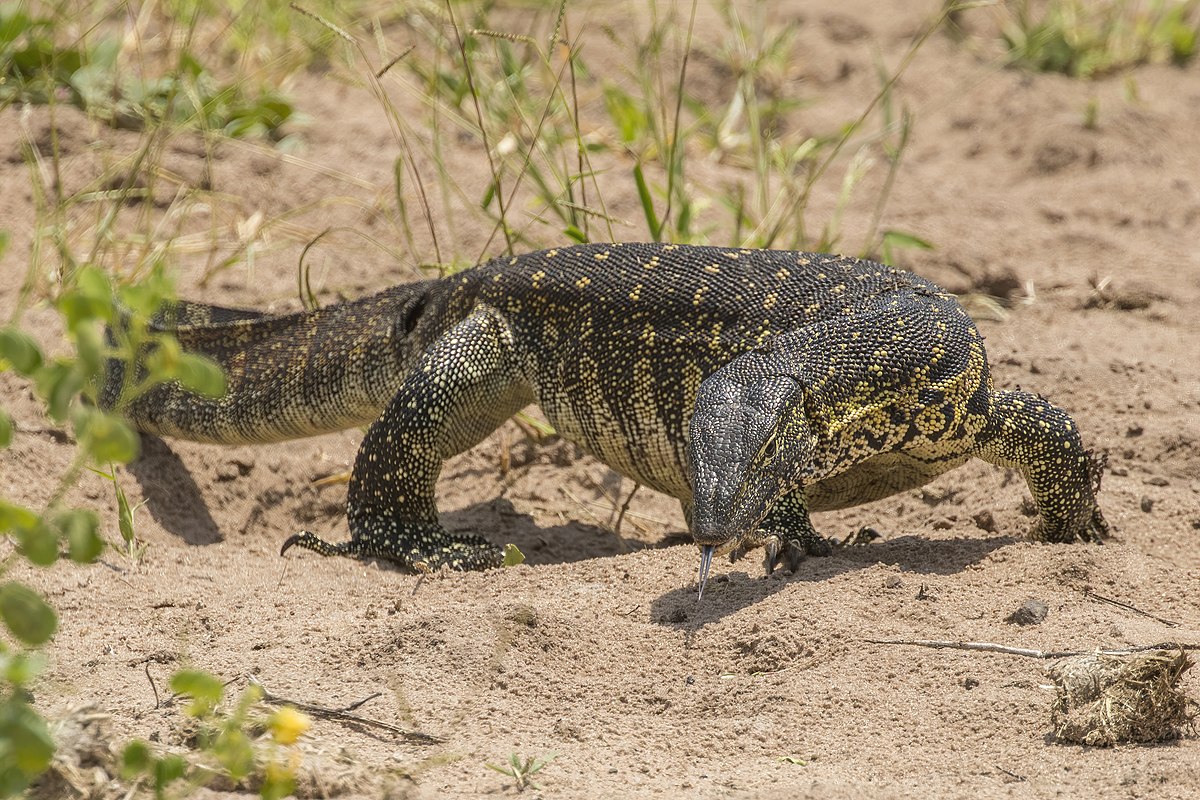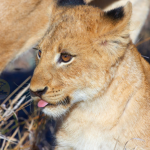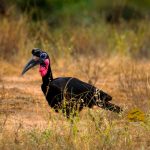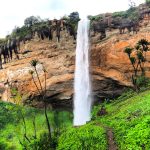The Nile Monitor Lizard: Uganda’s Giant River Dweller.
Most people know Uganda as the land of diverse wild animals, ranging from Mountain Gorillas to rare tree-climbing lions. However, one that is rarely noisy and mostly catches humans off guard while on or near the banks of rivers and lakes is the giant Nile monitor lizard. Scientifically known as Varanus niloticus, this is the largest lizard in Uganda, capable of growing more than 2 meters in length. It is one of the key predators and scavengers in most Uganda’s ecosystems, hence a reptile worth finding and appreciating.
Physical Characteristics of the Nile Monitor Lizard.
The Nile monitor, with his long, muscular body and coloring of the skin in tough, scalelike patches that vary in color from dark brown to olive green, is a sight to behold. It blends quickly into nature. Indeed, monitors adapt well to life in and out of the water with their sturdy, sharp-clawed limbs and very long, whiplash-like tails. Having forked tongues and pointed teeth, the monitors become formidable hunters and scavengers.
The reptiles are known for their great ability to adapt life in various habitats. Despite their wide distribution in Uganda, the animals prefer places close to the water body since they consider it their home. Much of the time of the Nile monitors will be spent near rivers, lakes, and wetlands. Some of the best places to spot them include the banks of the Victoria Nile, Kazinga Channel in Queen Elizabeth National Park, and on the shores of Lake Mburo-that is where hippos are at their best within this rife water-rich Ugandan landscape.
Habitat and Behaviour of Nile Monitor Lizard.
Being an aquatic species naturally, much time of the Nile monitor is spent either in or near water. In fact, lizards are great swimmers, their powerful tails gliding them easily through rivers and lakes. Primarily diurnal, these animals remain active during the day, providing them with the opportunity to hunt anywhere for survival in a wide range of environments.
On land, the Nile monitors are still often seen climbing trees or digging into the sandy riverbanks, laying eggs in concealed nests. They also raid bird nests for eggs and smaller animals, using sharp claws and powerful jaws to catch their prey. Nile monitors are not choosy eaters; therefore, they consume fish, frogs, small mammals, birds, and even carrion, being an important link in Uganda’s ecosystem.
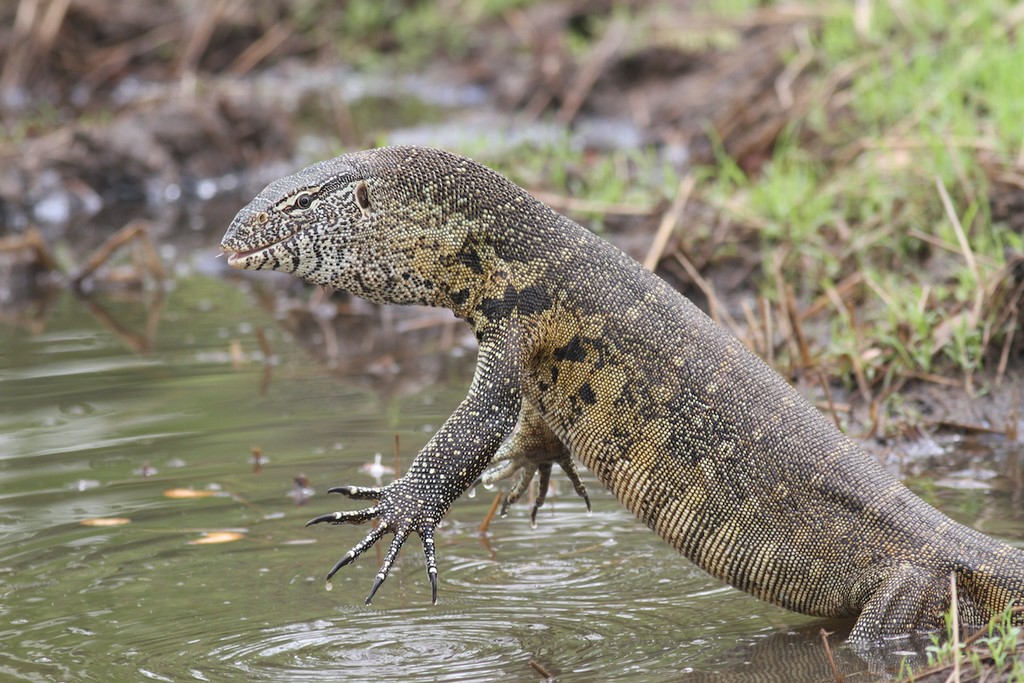
Role in Uganda’s Ecosystem.
The Nile monitor, being a predator and scavenger at the same time, plays a great role in population control of smaller animals to keep the ecosystem in a state of balance. They help clean up carcasses through scavenging, preventing diseases in the ecosystem while contributing to the natural process of decomposition.
Despite their fearsome appearance, Nile monitors are generally shy around humans and will avoid confrontation when possible. If threatened, however, they can become aggressive, using their sharp claws, teeth, and powerful tails to defend themselves. These lizards are more likely to flee to the safety of the water or climb trees than to engage in conflict with people.
Cultural Significance of the Nile Monitor Lizard.
The Nile monitor is more than just a wild animal in many Ugandan communities. It carries other interpretations; to some of the local communities, it is a sign of strength and may be resilient. According to some traditional beliefs, it carries mystical knowledge of the rivers and wetlands that are its home. People used to hunt Nile monitors for their meat and skin, which artisans used in traditional drum-making and other cultural products. However, conservation does not encourage hunting monitors.
Conservation and Threats.
While they do not currently face the threat of becoming endangered, there are still threats to Nile monitors through human activities, such as habitat loss. Expanding agriculture, pollution, and putting up infrastructure near areas with rivers and wetlands reduce their natural habitats. In some areas, Nile monitors are hunted down for food or skin and their eggs are collected for local consumption.
Thankfully, the national parks and protected areas of Uganda provide a home for these monitors. Queen Elizabeth National Park, Murchison Falls National Park, and Lake Mburo National Park are perfect habitats where these reptiles can thrive. These conservation efforts are in place to ensure that the Nile monitor will still be able to continue its role appropriately within the ecosystem and with human populations.

Best Places to See Nile Monitors in Uganda.
If you wish to see a Nile monitor during your Ugandan adventure, then you should travel to wetland areas, riverbanks, and lakeshores. Here are several places where you are likely to encounter these reptiles:
Murchison Falls National Park: This is one of the primary destinations to view Nile monitors basking on the riverside banks or swimming through the waters since it cuts through the Nile River.
Queen Elizabeth National Park: The Kazinga Channel connects Lake Edward and Lake George, both of which host a big number of wild animals; that includes Nile monitors. Take a boat cruise along the channel for the best views.
Lake Mburo National Park: With wetlands and lake systems, Lake Mburo is another spot where one can easily see the Nile monitor. A number of water bodies in the park are ideal for the survival of these large reptiles.
Remarks on Nile Monitor Lizard in Uganda.
The Nile monitor lizard is just amazingly interesting, whether it swims serenely along a river, basks in the sun along a lakeshore, or hunts its prey with equally impressive skill. This reptile is both an important and interesting animal in the ecosystem. To a nature lover and enthusiast of wildlife, the encounter with a Nile monitor in the wild is an exciting moment that underlines the great variety of life thriving within these aquatic ecosystems of Uganda. So, while viewing the rivers and wetlands of Uganda, beware: You could catch the glimpse of one of these grand reptiles, advancing stealthily on the fringes of the water.


